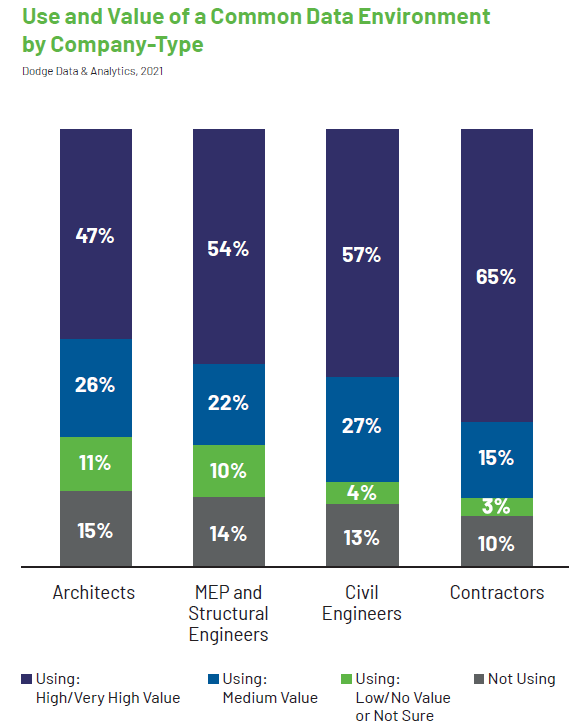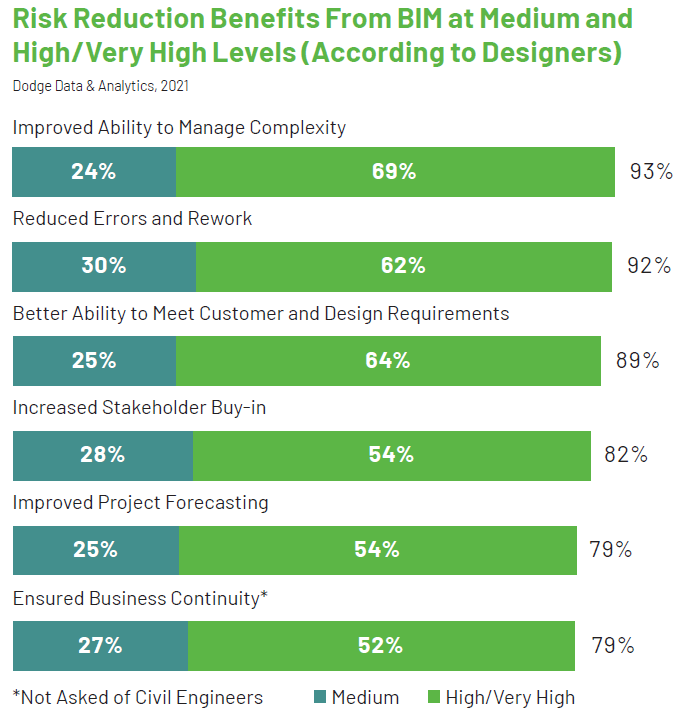Over the last twenty years, Building Information Modeling (BIM) has evolved from a fledgling concept to an indispensable tool that's reshaping the architecture, engineering, and construction (AEC) industry. For years, we’ve been on the brink of widespread adoption, but today, there’s no doubt left—BIM has become the norm. It’s revolutionizing AEC by turning it into a data-centric field.
The *Accelerating Digital Transformation Through BIM* SmartMarket Report, a comprehensive global study conducted by Dodge Data & Analytics in collaboration with Autodesk, offers deep insights into how architects, engineers, and contractors are implementing BIM and harnessing data. You can read the findings here.
According to the report, 60% of architects and 51% of mechanical, electrical, plumbing (MEP), and structural engineers already use BIM on at least half of their projects. These numbers are expected to soar to 89% and 80%, respectively, within the next 2-3 years. Civil engineers, in particular, are making significant strides. Approximately 70% have adopted BIM since 2016, with the most recent increase reflecting BIM’s growing importance in infrastructure projects.
The surge in BIM adoption isn't surprising. Companies are increasingly recognizing that going digital brings substantial benefits, including enhanced client satisfaction, better design quality, risk mitigation, fewer errors, and greater sustainability and operational efficiency. However, it’s not just about using BIM—it’s about using it extensively. The study reveals a clear link between a firm’s BIM intensity (the percentage of projects utilizing BIM) and the pace of their digital transformation. High-intensity BIM users are more likely to achieve their digital goals, with nearly half of them nearing full digital transformation, compared to only 26% of general BIM adopters.
One of the standout advantages of BIM is the opportunity for collaboration through a Common Data Environment (CDE). Most BIM users leverage a CDE to share data with their teams, with contractors reporting the highest value from its usage. Here’s what the data shows:

Risk management is another area where BIM shines. More than three-quarters of designers report significant benefits in reducing risks across six key areas:

High-intensity BIM users experience the most substantial risk reduction benefits. As Dodge Data & Analytics notes, "High BIM intensity significantly enhances the ability to handle complexity, minimize errors, and meet customer expectations." Even moderate BIM usage leads to higher stakeholder engagement and ensures business continuity.
Looking ahead, this new data is thrilling because it highlights the rapid pace of digital transformation. BIM has always been about data, but its full potential was contingent upon universal adoption. Today, architects, engineers, and contractors are all on board.
As an industry, we must continue pushing forward. We’re just at the start of a new chapter for BIM. Phil Bernstein, associate dean and professor adjunct at Yale University, remarked in a special interview for the report, “I hope that as the industry tackles its next set of challenges—climate change, social inequality, labor shortages, and disrupted supply chains—it will utilize tools like BIM, and eventually AI, to optimize the entire construction process.â€
As the AEC sector embraces BIM further, we’ll uncover innovative solutions to address our biggest challenges. I urge you to explore the complete report to see the data firsthand and understand how BIM is propelling digital transformation.
In conclusion, BIM isn’t just a trend—it’s a game-changer. The future of AEC is data-driven, and BIM is leading the way.
Shipping Label,Postage Online,Print Shipping Label,Shipping Tags
Jiangmen Hengyuan Label Technology Co., Ltd , https://www.jmhylabels.com
